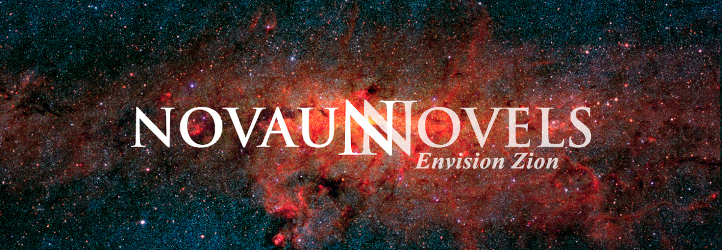As a young woman who very much wanted to please God, I tried to make choices that He would approve of, both in my reading and writing, and was often disturbed by some of the excuses people use to defend unwholesome material. I still remember sitting in a creative writing class and hearing the professor tell us that a fictional scene involving men playing cards wouldn’t be realistic if it didn’t contain profanity. This professor explained that if we, as writers, wanted our stories to be plausible and correct, we should be willing to include profanity in such a scene.
Despite what my professor taught, I was certain that I could never feel comfortable writing a scene containing profanity. Even so, these kinds of questions went through my mind: Is it possible to write realistically about difficult topics without discarding my commitment to keep things wholesome? Will my work suffer artistically because I’m not able to tell the complete truth? Will I be forever doomed to read only books that present a sugar-coated view of reality?
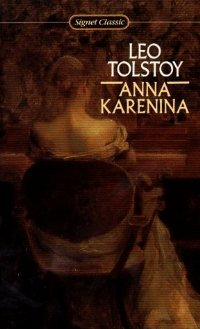
Many years ago I began making a greater effort to read the classics of fiction. The second or third book I read was Leo Tolstoy’s Anna Karenina. It is difficult for me to express the powerful experience I had reading this book. Tolstoy, an artist in every sense of the word, took a difficult subject, adultery, and wrote about it so realistically that I was able to feel the horror and degradation of it, and he was able to accomplish this without one sex scene. In fact, I don’t think he even showed Anna and Vronsky exchange a kiss on the lips. Not only that, but this very long novel, which in my copy has 807 pages, achieves a striking level of reality without using more than a handful of profane and vulgar words, and those are mild by modern standards.
After that experience, no writer, no critic, no reader, and no teacher could ever again disarm me with the claim that if a writer wants to write truthfully and realistically, he must be willing to include vulgar language and explicit scenes when the situation demands it. I believe the opposite is true. I believe that a writer will be able to write more realistically and truthfully if he leaves those things out. Why? Because these foul elements are never necessary in a work that sincerely seeks to dramatize truth. To include them not only adds an unwholesome element to the piece, it violates one of the cardinal rules of fiction writing, which is that every word, detail, and scene in a literary work should contribute to the development of its plot and theme. Anything that doesn’t contribute to the development of the story obscures the true point of the piece, resulting in a story that is less clear, less unified, therefore less polished and powerful than it could have been.
I’m going to examine four areas of concern to many people of faith and explain why standards regarding them make good literary sense. My focus will be on fiction, but my comments apply to many types of non-fiction also.
Immoral Themes and Sordid Subject Matter
Immoral Themes and Sordid Subject Matter
The terms “subject” and “theme” are often interchanged and incorrectly defined. To avoid material that contains sordid subject matter and immoral themes, we have to know what “subject” and “theme” mean, and we have to know how to identify them in the things we read.
Determining the subject of a work is usually easy. It’s what the book is about. Often the title will refer to the book’s major subject. Some books have the Library of Congress information printed below the copyright notice. It will also tell you the major subjects.
The theme is what the book says. A long work, such as a novel, will not only have one predominant theme, but it will usually have many other themes as well that speak on a variety of different subjects. The theme of a story is an observation about life, a verdict. The best themes will be insightful, universal, and true. An immoral theme is simply one that in some way condones or promotes breaking the laws of God, in particular the law of chastity. In essence, an immoral theme is a statement about life that is a lie.
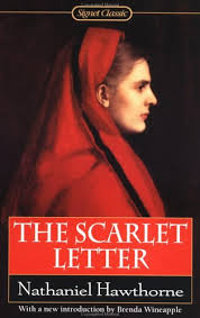
Consider the subject adultery. Since adultery is a heinous sin, it is not a pleasant subject, but a book dealing with it isn’t necessarily unwholesome. Whether the work is wholesome or not depends a great deal on the theme—what does the book say about adultery? A possible true theme about this subject, dramatized in great works of literature such as Anna Karenina and The Scarlet Letter, could be: “Adultery destroys relationships and makes everyone involved miserable.” Another true theme, found in the story of King David in the Bible, could be: “Committing adultery can lead to more reprehensible sins.” Still another true theme might be: “When an adulterer chooses the long, difficult road of repentance, his peace of mind will be restored and family relationships can be healed.”
Possible immoral themes, found in many books being published these days, include: “Adultery can be glamorous, exciting, and fulfilling,” and “Adultery can shake a marriage up and actually strengthen it, making the whole family much happier than it would have been had it never happened,” and “Committing adultery is perfectly acceptable if your spouse is a jerk.” Sometimes the immoral themes are subtle: “Romance with a person who isn’t the spouse is perfectly acceptable if your spouse is a jerk as long as no sex is involved.”
Often we accept material that contains immoral themes because it “doesn’t show anything.” Let’s be honest with ourselves. If this kind of material disgusted us, we would never read it. We wouldn’t want to. More often than not, however, we come away from literature of this type thinking that the immoral act in the story wasn’t really so bad. Perhaps we even think that, given the circumstances of the story, it was almost justified. Any material that could influence a person committed to living the laws of God into believing these lies, even for a moment, has a tremendous deal of persuasive power!
Sometimes I run across books that have what I consider double-standard themes. An immoral act occurs. The character somehow acknowledges the fact that what he did was a mistake. He may even feel a little guilty. Even so, I, as a reader, may come away from the book feeling glad the immoral act happened. Or I may come away from it feeling that what happened wasn’t so bad. Or I may come away from it confused, wondering what the book is really saying. I believe books with double-standard themes are written by two basic groups of people—writers who are trying to write about chaste people but do not, themselves, live a chaste lifestyle and writers who believe intellectually that immorality is wrong, but deep down, they don’t feel it’s that bad. In both cases, a moral appearance conflicts with an immoral essence, resulting in an underlying hypocrisy that weakens the work and affects the reader at a subconscious level.
For this reason, we should be careful when analyzing a work of literature not to rely completely on what we know of the author’s character in deciding whether the book meets our standards or not. People who share our moral standards and even our particular religious beliefs may write books that contain immoral themes and other foul elements, and writers who are trapped in a destructive lifestyle are sometimes lucid enough in their perspective and honest enough in their execution of the material that they write amazingly truthful books. A good example of the latter type of literature is The Great Gatsby, by F. Scott Fitzgerald. A piece of literature has a way of unmasking its writer and revealing what he truly believes—not what he thinks he believes. When all is said and done, the work will speak for itself far more forcefully than the writer can ever speak for it.
Along with moral themes, immoral themes, and double-standard themes, there is one other type of theme I’ve encountered in my reading—the all-inclusive theme. This is a theme that, at its most fundamental level, says, “Truth is relative and there are many paths to success and happiness.” I’m sure that many authors who write with this theme truly believe it. Others are seeking to illuminate truth by exploring the lives of characters who have varying and often contrary points of view. I believe, however, that most writers who use this approach are attempting to make their stories more universal to expand their reader base.
The all-inclusive theme is perhaps the most difficult one to analyze because it’s such a chameleon. My own opinion is that a well-written book containing an all-inclusive theme will never be as powerful as a comparable book with an unequivocally moral theme. I don’t believe, however, that a book of this type deserves an automatic rejection. Whether such a book strikes us as being wholesome or not will depend a great deal on which of its characters we most identify with.
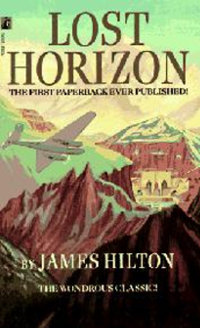
The best way I can think of to explain what I mean is to give you an example. The novel Lost Horizon by James Hilton contains an all-inclusive theme. The so-called paradise it describes, Shangri-La, seeks to accommodate all types of people with a wide range of value systems. This quality, by itself, isn’t necessarily a bad thing—the United States is, after all, built on similar principles—but while Shangri-La has many wonderful qualities, there are unchaste traditions at work there also. Had I identified primarily with the viewpoint character, a man who comes to regard Shangri-La as the community of his dreams, I probably would have rejected the novel as being immoral. The character I identified with most, however, was a woman so unhappy with her role in Shangri-La that she risks death to break away from it. Had I been that woman, I would have been unhappy also, so the book rang true to me. In providing the disenchanted woman’s storyline, the author gave me and other readers wary of Shangri-La an escape route, so to speak. A reader doesn’t have to accept Shangri-La as an ideal society to accept the book.
I think the key to judging a book’s theme is self-honesty, coupled with adherence to the standards and truth we possess. When determining whether the literary work in question contains an immoral theme, we can ask ourselves questions such as these:
- If a primary character engages in sexual relations outside of divinely approved marriage between a man and a woman, does he experience any guilt?
- Whether he feels guilty or not, does he experience adverse consequences because of what he did?
- Does his act affect the people around him and society in general in a negative way?
- If an unchaste act is a part of the plot, do I come away from it disgusted? Or do I come away from it feeling glad it happened? Do I come away from it feeling that, while not a good thing, it wasn’t so bad?
- Is a main character in any way romantically involved with a person other than the spouse? If so, do I come away from the story feeling this was a bad thing, even if no sex was involved and even if the spouse is a jerk?
As illustrated above, unpleasant and sensitive subjects can be written about in wholesome ways. To determine whether a book dwells on the seamier side of life in fundamentally unwholesome ways, we can ask ourselves questions such as these:
- Does the work contain toilet humor?
- Does it contain sexual humor?
- Does it seem to wallow in filthiness?
- Is there some point to the book? Or is it simply a romp in darkness?
- Even if the events of the book are often tragic and the natural consequences of sin are shown, does the book contain hope or some kind of enlightenment?
- Does the book contain any redeemable, likeable characters?
- Do I come away from the book feeling titillated, polluted, or morally confused?
Most of us think of great art as being a thing of beauty. If great art is synonymous with beauty, can literature that is drowning in darkness and filthiness ever be considered great art? And can a work of literature ever truly be great if it teaches lies? Only in a society that considers filthiness and falsehood to be things of beauty and values them more than cleanliness and truth. Too often, however, we accept immoral literature because it’s so well written, but if we examine the issue logically, we’ll have to conclude that clever style and masterful technique can’t make a work that tells lies great—but they will give more credence to the dark illusion spun by those “that call evil good, and good evil; that put darkness for light, and light for darkness; that put bitter for sweet, and sweet for bitter” (Isaiah 5:20).
Foul Language

The most common reason writers give for using profanity and other foul language in their writing and readers and critics give for allowing it is realism. This argument, however, is just plain silly. Whether the work is realistic or not has nothing to do with the foul language it may contain. A book like The Wonderful Wizard of Oz will never be realistic, no matter how much foul language someone might try to add to it, and a novel like The Grapes of Wrath would be just as realistic if the profanity were stripped from it. We have, in fact, a terrific example of The Grapes of Wrath without the profanity—the film version from 1940. This film is a classic in its own right and is as stark and realistic as the novel by John Steinbeck.
Yes, literature at its best will simulate real life, but it is still a mere simulation, a condensed, carefully constructed one. Producing well-written literature, even the most realistic kind, requires writers to painstakingly select and arrange the details they will use. In their work they constantly sacrifice perfect accuracy for dramatic effect and smoothness of presentation. Even when creating novels around real people and events, writers will make up episodes and characters and often even reorganize events.
Dialogue in particular is contrived. If dialogue were a true reflection of the way people talk, no one would read fiction because it would be too boring. Writers use pieces of conversation to advance the story, then discard all else. Characters get directly to the point, rarely talk at the same time, and don’t repeat the things they say unless the author wants to paint the character as indecisive, rude, or absent-minded. Even then, if the author’s competent at all, he’ll be careful not to drag the dialogue out too much or do anything bizarre because he won’t want to confuse or bore his readers.
Any type of writing that doesn’t require complete accuracy in every single little detail certainly doesn’t require profanity or any other foul element. Readers have no more need to experience what comes out of a character’s mouth in the way of foul language than they need to know every type of food and drink that goes into the character’s mouth over the time span of the story.
Authors often use foul language to create vulgar characters, but even that weakens the writing. After all, modern “good guys” swear, and a person doesn’t have to be foul-mouthed to be a boor. Readers who aren’t offended by the vulgarity probably won’t think there’s anything wrong with it and won’t get the point, and those who are offended by it won’t want to read the story at all or will be so bothered by the vulgarity that they, too, will miss the point. Other literary techniques give more life to characterization—tone and speed of the voice, unique sentence structures, mannerisms, facial expressions, the subjects of the character’s speech, his treatment of other people, his vocabulary (minus the bad words!) and the way he uses language, the reactions of the other characters to him.
Underlying the foul language in a story are the fundamental character traits that are important. If we were to examine a story full of foul language, we could ask: Why does this character swear? Does he have a temper? Is she being rude? Is he showing off? Is she uneducated and unable to communicate in a refined way? Did his parents yell at him when he was a child? Is she just trying to fit in? If the motivations for the foul language are discernible in the story, they would be more discernible if the distracting language were removed.
Let’s face reality for a moment. Most fiction published doesn’t claim to be a true representation of life. It’s escapism—melodrama. So why is our society so determined to tolerate, and in many cases even encourage, fictional swearing in the name of realism?
I love this quotation by Isaac Asimov:
Ordinary people, who are not well educated and who lack a large working vocabulary, are limited in their ability to lend force to their statements. In their search for force, they must therefore make use of vulgarisms which serve, through their shock value, but which, through overuse, quickly lose whatever force they have, so that the purpose of the use is defeated.
Writers, on the other hand, have (it is to be presumed) the full and magnificent vocabulary of the English language at their disposal. They can say anything they want with whatever intensity of invective they require in a thousand different ways without ever once deviating from full respectability of utterance. They have, therefore, no need to trespass upon the usages of the ignorant and forlorn, and to steal their tattered expressions as substitutes for the language of Shakespeare and Milton. . . .
. . . it is my contention that dialog is realistic when, and only when, it reflects the situation as you describe it and when it produces the effect you wish to produce.
Isaac Asimov, “Dialog,” in Writing Science Fiction and Fantasy, ed. Gardner Dozois et al. (New York: St. Martin’s Press, 1991), 36-37.

Nudity and Sex
I think it would be helpful to begin by explaining what it means to depict nudity or sex. When we’re watching a movie, it’s usually obvious when we’re viewing a scene of this type. Such a scene in a book may not be as obvious, but determining whether it’s a depiction or not is just as simple.
Reading, “She took off her clothes,” is a different experience from reading a scene that describes what is under the clothes. Similarly, a sexual encounter enacted “on stage,” or in the presence of the reader, produces different sensations than one that is merely suggested. Whether I watch a depiction of nudity or sex on the screen or read it in a book, an image is being put into my mind.
People in favor of literary depictions of nudity and sex often try to confuse and paralyze us with this argument: “Since violence is bad and the human body is beautiful, why is our society so willing to tolerate depictions of violence in the media while it remains so uncomfortable with depictions of nudity and sex? Shouldn’t it be the other way around? When are we, as a society, going to stop being so prudish?”
Violence is bad and the human body is beautiful, but that’s beside the point. Depictions of nudity/sex and violence are completely separate issues and should be treated as such. The difference between them boils down to the principle of modesty. While depictions of violence can certainly be unwholesome, they don’t, unless they involve sex, violate the principle of modesty. So no, a person who accepts some violent content and is, at the same time, uncomfortable with depictions of nudity and sex is no more a prude than a person who prefers to use a dressing room to try on clothing at a department store or who avoids peering into his neighbor’s undraped window.
Many writers include sex scenes in their books, some graphic and some only describing the emotions of the characters. Writers of such scenes claim they are necessary for “artistic expression,” and literary critics condone them, as long as they flow naturally from the story, developing a character or the plot. After all, their intent isn’t to arouse lustful feelings in the reader (which, even from a secular point of view, would make the work erotica or maybe even pornography); the intent is to define the character. “Artistic expression” is another empty argument.
Writers often claim a sex scene is essential to the plot and must, therefore, be included. In my experience writing, a truly essential scene is rare—the point can nearly always be made in some other way. I also know how easy it is for a writer to manipulate a story to make a scene seem as if it is essential, and I’m also painfully aware of how difficult it can be to open one’s mind to all of the possibilities inherent in a story idea. We writers are so often bound by our own experiences and perspective, and in our writing we use techniques we have often observed, techniques that feel familiar to us.
Whatever a writer intends to express in a sexual scene can always be expressed better in other ways, whether it be physical attraction between a man and woman that comes about from love, whether it be emotional intimacy, or whether it be lust or manipulation. If you think about it, all of these qualities will manifest themselves in other aspects of the relationship—the bedroom is only a small part of it. Tolstoy understood this truth and used it in his writing, which is why Anna Karenina is such a powerful book.

Charlotte Brontë understood it also and was, therefore, able to write the most passionate love story I’ve ever read: Jane Eyre. In fact, I’ve never read another love story that even comes close. What techniques did Brontë use to create such a passionate, yet wholesome, story? She made Jane and Rochester come alive! There are only so many ways to write, “They touched, they embraced, they kissed.” Unique, passionate scenes grow from the deep feelings of the characters. Brontë portrayed Jane and Rochester as complex human beings and dramatized their relationship on all of its levels—spiritual, social, emotional, intellectual, as well physical.
Focusing on these other aspects of the relationship will always result in the more effective expression of lust, manipulation, emotional intimacy, or physical attraction in love, because then the emphasis is on the intellectual, emotional, and spiritual sides of the relationship—too much physical emphasis is distracting, because it appeals to an erotic sense in the reader instead of to an emotional one.
If, in your reading, you do run across a scene depicting nudity or sex that appears to be an essential element of the plot, then the theme of the book is probably immoral. In the case of a scene where the essential information has something to do with the sex act itself, then the subject matter in question violates the principle of modesty, even if the theme of the story is a true one. At the other extreme, a piece that condones or glorifies sin may require foul elements to make its point.
When deciding whether a book contains depictions of nudity and sex and treats the topic of sexuality in an unwholesome manner, we should ask ourselves these questions:
- Does the book contain scenes that put images of nudity into my mind?
- Does it contain scenes that put images of sexual encounters into my mind?
- Does the material treat the topic of sexuality in a modest, moral fashion or do I come away from it feeling polluted, titillated, or abnormally curious about matters that should remain veiled?
Olive Ann Burns, in a letter to her publisher, said this:
I don’t know if it will help sales to say Cold Sassy Tree isn’t a dirty book, . . . but I don’t think I’m the only person who is tired of sordid stories about unsavory people. I’m tired of books and movies full of paper-doll characters you don’t care about, who have no self-respect and no respect for anybody or any institution. I hope this book is compelling and realistically sensual; I have great respect for human sexuality. But I’m tired of authors so lacking in sensitivity that they wallow in vulgarity and prostitute sex—making exhibitionists out of the characters and peeping Toms out of the readers. And I don’t want to sound preachy or Victorian, but I’m tired of amorality in fiction and real life. Immorality is a fascinating human dilemma that creates suspense for the readers and tension for the characters, but where is the tension in an amoral situation? When people have no personal code, nothing is threatening and nothing is meaningful.
Olive Ann Burns and Katrina Kenison, Leaving Cold Sassy (New York: Bantam Doubleday Dell Publishing Group, Inc., 1994), 232-233.
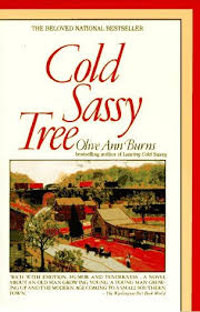
Extreme Violence
Physical emphasis is too distracting in the presentation of violence also. The blood and gore will never have the lasting impact on a reader that honest exploration of all the social, emotional, and psychological effects of violence on society, the victim, the victim’s family, the perpetrator’s family, and the perpetrator himself.
Consider this: Have you ever been acquainted with a person who was the victim of a violent crime? If not, have you read a true account? Were you there when this violent event occurred? Probably not, and yet you didn’t need to witness the event to feel the horror of it. The person’s life is a testimony to the cruelty of what he or she experienced.
We have all heard the argument in favor of depicting violent events with all of their horrifying details because anything less sanitizes the act in such a way that readers supposedly become immune to the fact that violence is evil. In reality, the opposite is true. What Isaac Asimov said in that quotation regarding vulgar language applies just as well to gratuitous violence. Violent detail may be effective for a while for its shock value, but constant exposure to such material desensitizes us and, over time, actually makes us less sensitive to the evil of violent behavior.
If you ever begin to doubt the idea that a restrained depiction of a violent event could ever have the same impact on society as an explicit one, think about the accounts of the crucifixion of Jesus of Nazareth recorded in the New Testament. Four different men wrote about this execution and the unjust events leading up to it, and yet not one of them presented the story in an explicit way, and they didn’t need to. Whether these passages move us to compassion and gratitude to One we love and worship, or whether they make us shudder at the violence they have motivated, or whether they mean nothing to us personally, I think we can all agree that they are some of the most influential writings of the past two thousand years, not only inspiring great faith and, paradoxically, terrible abuses, but also becoming the source material for a massive amount of literature, music, and visual art.

Even the Old Testament, as frank as it is, doesn’t even come close to giving us the blood and gore so often found in modern books and movies. If the Bible can describe violent events without undue detail, then certainly fictional stories ought to be able to do so also, even those that claim to be dealing with “true” events.
To determine whether a literary work is too violent, we can ask ourselves questions like these:
- How many violent acts occur within the scope of the work? Do I come away from it feeling the number is excessive?
- If a violent act occurs, is compassion shown for the victim, even if the victim is an enemy? Or do the so-called “good guys” take delight in killing?
- If a violent act occurs, is it shown to have tragic effects on the perpetrator, the victim, those close to the perpetrator and victim, and society in general? Is violence always shown as evil?
- When a violent act occurs “on stage,” does it show more than just a little blood? Or does it focus on the gory details? Does the description seem gratuitous?
For a perfect example of fiction that deals with violent events in a moral, tasteful, effective way, we can look again to Leo Tolstoy and his epic War and Peace. Many educated people consider War and Peace the greatest work of fiction ever written; it is certainly one of the most complex. Interestingly enough, this novel also contains a scene with men playing cards—a significant scene in the book where one of the main characters gambles away a huge amount of money, a mistake that worsens his family’s financial problems. (Book 4, Chapters 13 and 14) Somehow Tolstoy managed to paint a vivid picture of what happened during that card game without using one vulgar word! Had I been familiar with War and Peace as a young woman, I wouldn’t have been so disturbed by what my creative writing teacher taught.
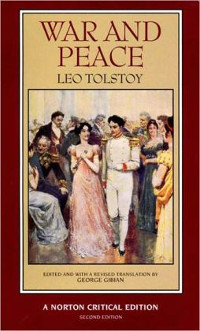
When we read books that are truthful and intelligent, we’ll become more knowledgeable. As we choose literature that reveres holy things, we’ll refine our sensibilities and become more spiritually perceptive. While we stand by our commitment to choose fiction that promotes chastity and other virtues, we gain confidence in our own beliefs and become more assertive. As we work to eliminate foul language from our minds and seek out language that edifies, our command of the language increases and we become more articulate.
I’ve just described a person who is knowledgeable, sensitive, perceptive, confident, assertive, and articulate. Isn’t that the kind of person we all want to be?
The featured image came from Pixabay.
